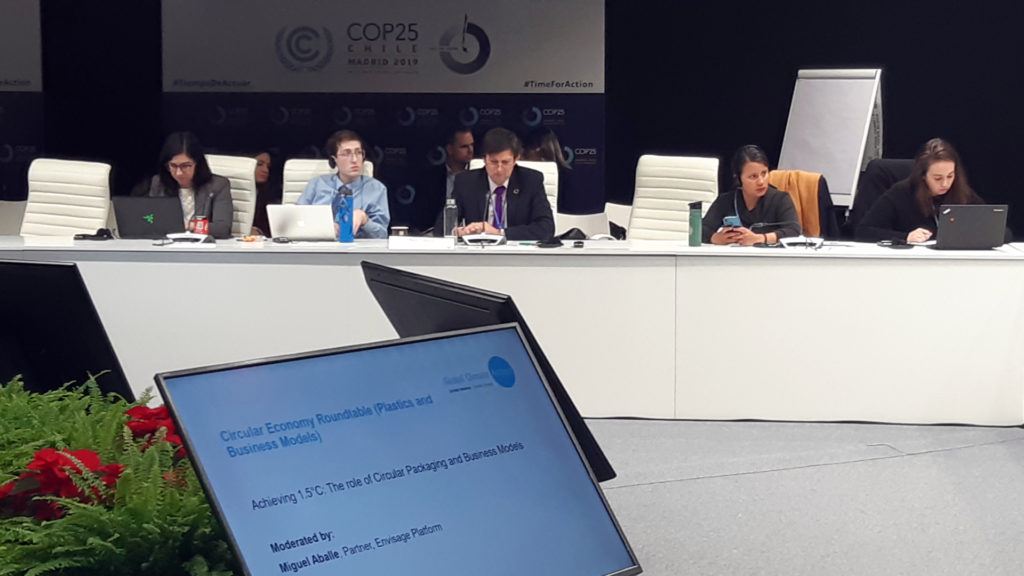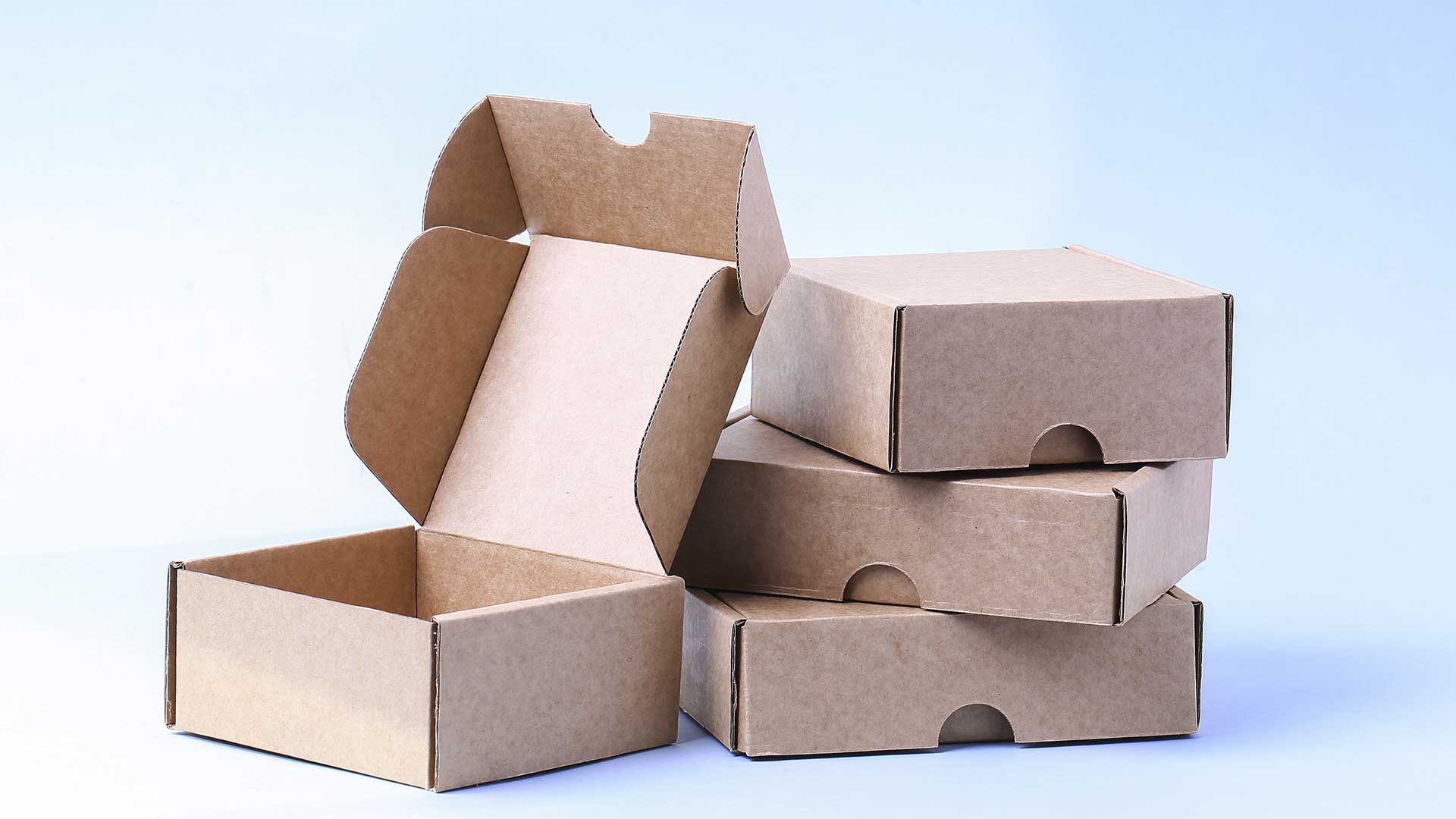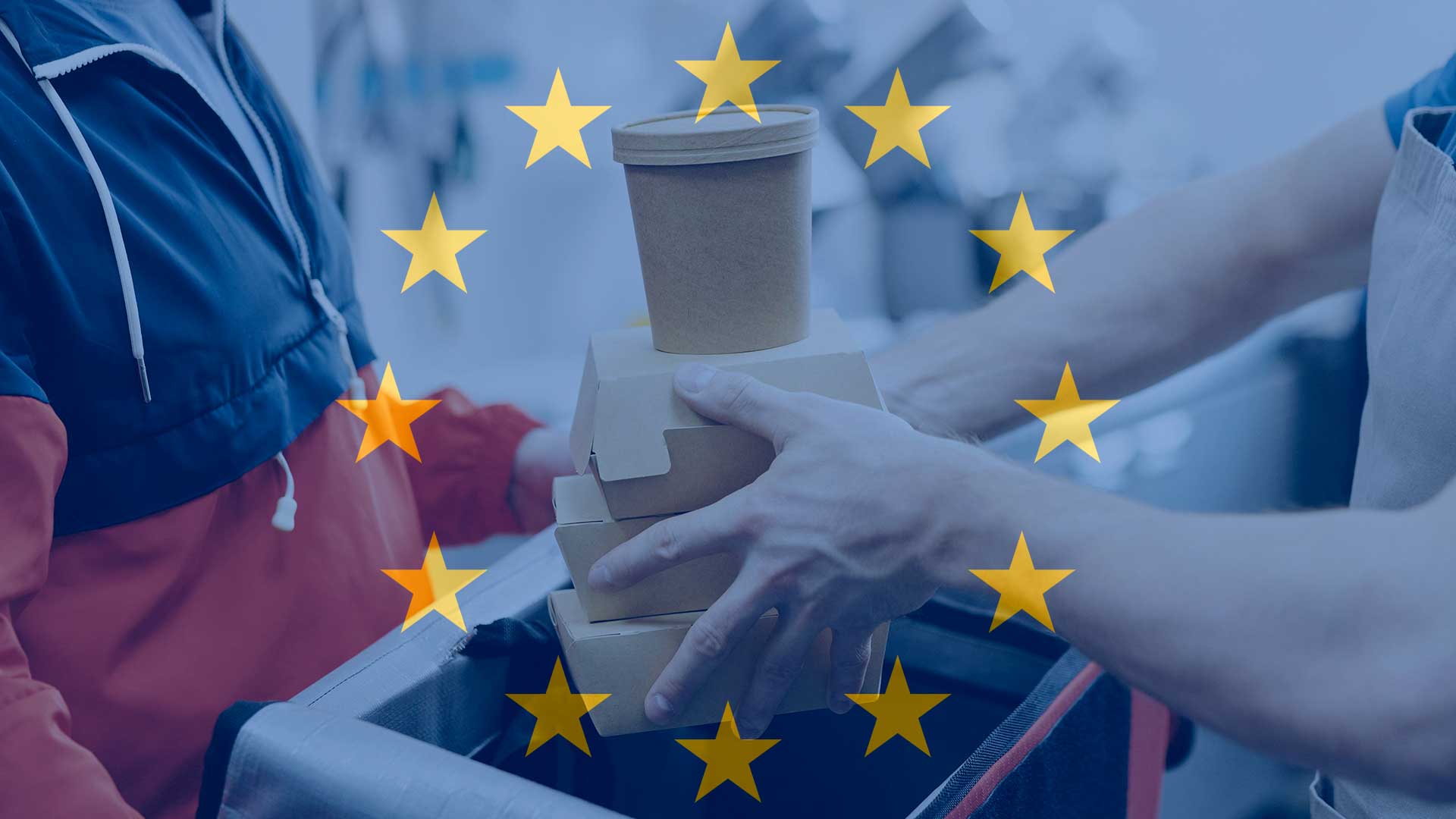The director of the UNESCO Chair in Life Cycle and Climate Change ESCI-UPF and observer to the United Nations Framework Convention on Climate Change in COP25, Pere Fullana i Palmer, participates in the Circular Economy Roundtable organised by the World Business Council for Sustainable Development.
Today, the World Business Council for Sustainable Development has organised a roundtable at the UN Climate Change Conference COP 25 to highlight concrete examples of actions to implement circular economy principles and business models across value chains that reduce or eliminate waste and their contribution to achieving the objectives of the Paris Agreement. To this end, the Roundtable on Circular Economy: Packaging and Business Model has convened leading government, private sector, civil society and academia stakeholders, including the director of the Chair Pere Fullana i Palmer, to highlight the role of circular economy action in driving systems transformation to a net-zero and climate-resilient economy.
Emphasizing the importance of adhering to the recommendations of science, the Roundtable has been framed in the context of ambition to limit global warming to 1.5°C, in accordance with the findings outlined by the Intergovernmental Panel on Climate Change (IPCC), as well as the planetary boundaries highlighted through the Sustainable Development Goals (SDGs). “The science is clear: nothing short of system-wide transformation at the global level is needed,” as highlighted by the organisers. Therefore, limiting global warming to 1.5°C will require rapid and far-reaching transitions in energy, land, materials, urban infrastructure (including transport and buildings) and industrial systems; according to the experts.
To support this important idea the World Business Council for Sustainable Development has pointed out some data: “One-third of all food produced for human consumption is wasted, representing $1B USD in lost value. Even more pressing, this results in over 4.4 Gt of CO2e emitted every year. In fact, if food loss and waste was its own country, it would be the third-largest emitter of GHG emissions after the U.S. and China.”
Thus, food loss and waste are recognized as a serious threat to the economy and the environment. But, what causes it? This loss and waste occur due to a range of issues along the supply chain, including the packaging stage. Therefore, packaging can be an opportunity to reduce it since it is critically important for “protecting food during transport, providing consumer convenience & portion size and extending lifetimes of some products that are at risk of spoiling before it reaches the end consumer,” as stressed by organisers.
Informed decisions
“It is imperative to find solutions beneficial for the environment,” as remarked by the director at the Chair. Fullana i Palmer has highlighted that “we are on an emergency and we need to give our opinions to move decision-makers into action now and non stop.” Furthermore, “all of us need to know how the products and services we buy impact climate change and it is essential that there is enough public and private funding available to assess the impact of all these products across their whole life-cycle, as well as to communicate it to the public,” he has added.
That is why businesses, governments, scientists and civil society are called on to work together on finding the right balance between minimizing food loss and minimising packaging waste through effective packaging solutions. And this can be a controversial issue, according to the organisers: “There is an urgency to bring to market solutions that eliminate plastic packaging or introduce substitute material.” However, “these solutions are not always beneficial for the environment and may increase food waste”.
In this regard, the director of the Chair has called on to make a more intelligent use and management of plastics. Even though plastic waste is a major problem plaguing landfills and oceans the world over when used correctly and thoughtfully, plastic can offer some benefits that other materials can’t, such as reduced weight, energy savings, strength and durability, among others, according to him.
By means of an example, he has explained some conclusions of the Life Cycle Assessment (LCA) study made within the LIFE Zero Cabin Waste Project by researchers at the Chair. This study is aimed at identifying the hotspots along the whole life cycle of packaging and tableware items. “Variables such as material, weight and the number of reuses can greatly influence greenhouse gas (GHG) emissions. The assessment revealed that the lighter single-use packaging and tableware for airline catering are less harmful under a life cycle perspective,” according to the study.
By pointing out another example, Fullana i Palmer has mentioned the study of fresh fruit and vegetable logistics conducted by the Chair, regarding the use of single-use wooden and cardboard boxes and re-useable plastic crates. “Which option is the best: the renewable one, the recyclable one or the reusable one?” he has asked. “Anyone can be the best depending on its application. For instance, for short distances, it is best to use the multiple-use option, but for very long distances, single-use ones can offer better performance,” he has argued.
Finally, Fullana i Palmer has also pointed out the need to shift to more sustainable diets and food systems addressing sustainability, both in its nutrition and environment dimensions. “Food sector is paramount for climate change and in our studies we have found that for this sector more packaging means less impact,” he has explained. Thus, quoting Bob Marley he has concluded: “It’s not all that glitters is gold, half the story has never been told, so now you see the light, stand up for your rights.”




Leave a message